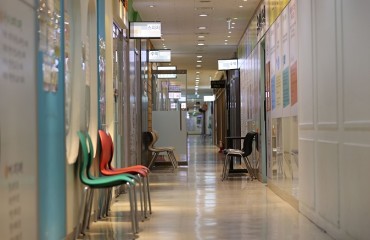
This file photo shows a wedding ceremony held in the country’s southwestern city of Gwangju on July 4, 2020. (Yonhap)
SEOUL, Jan. 20 (Korea Bizwire) – Assortative mating inequality in South Korea is lower than in other countries while the proportion of single-person or single-parent households in the country is also lower than in other nations, a central bank report said Thursday.
In a recent study, the Bank of Korea reported that the Gini coefficient of South Korea’s personal labor income was 0.547, which was higher than other major countries.
In contrast, the Gini coefficient for household labor wage was 0.361, which was lower than the average among other major nations.
A reading of zero means complete income equality, while higher numbers nearing one indicate a widening gap in earnings between the rich and poor.
This indicates that the income-sharing effect of a household, or the capacity of resolving income inequality when a high-income earner and a low-income earner come together to form a median-income household, was more evident in South Korea than in other countries.
The report showed that the rank correlation coefficient and correlation coefficient of labor income between a married couple were 0.03 and 0.06 respectively, edging towards zero. South Korea was ranked 33rd and 32nd among all 34 states.
The assortative mating inequality index, which measures how frequently a couple with similar incomes emerges from a random group of marriages, was 1.16 in South Korea, which was the lowest among all 34 nations.
This is attributed to the fact that while there are many married couples in which both the husband and wife make high incomes, there are also numerous cases where a high-income-earning male marries an unemployed, low-income female, or vice versa, a phenomenon that tends to occur less frequently in other major countries.
The report also said that the share of single-person and single-parent households in South Korea were 14.7 percent and 4 percent, respectively, lower than the average among other major nations (22.6 percent and 7.4 percent).
H. M. Kang (hmkang@koreabizwire.com)






